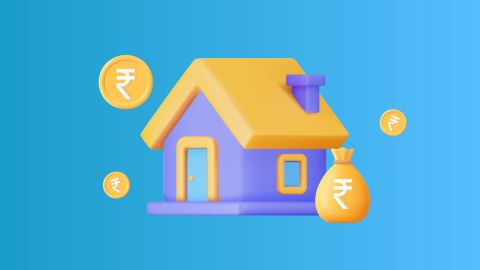The Indian Government and its ancillary bodies are responsible for launching various government housing schemes from time to time. Primarily regulated by the central or state government, these schemes aim to simplify the home buying process. These schemes also work towards inclusion and allow those from the middle and lower-income groups to realize their dream of owning a home of their own. Given the economic scenario and the rising cost of real estate, buying a home through an affordable housing scheme will help you evade high property prices and enjoy better quality construction. As a potential homeowner, you can avail either a scheme for home loans or a scheme that allots plots at a price that is lower than that offered by private real estate players.
Take a look at some of the best government housing schemes you can benefit from at present.
Pradhan Mantri Awas Yojana (PMAY)
PMAY was initiated to make homeownership an affordable reality for the Economically Weaker Sections (EWS) of the society. You get affordability through this scheme via an interest subsidy of up to Rs. 2.67 lakh on your home loan. In order to avail benefits, you first have to qualify as a beneficiary as per your economic standing.Based on the annual income of your household you can qualify as a beneficiary under the EWS, LIG, MIG 1, or MIG 2 category. Further, as a beneficiary, you will have to take a home loan to complete your home purchase. PMAY partners with a list of reputed financial institutions like Bajaj Finserv to add more ease to your home buying process.
Based on the sub-section you qualify under, the loan amount and the size of the house you are eligible to buy are determined. Further, this affordable housing scheme gives preference to women and senior citizens, making allotment of ground floor accommodation compulsory for senior citizens. It is strict about eco-friendly construction too. All in all, PMAY is more of a home loan scheme, as the benefits of PMAY are primarily extended through the Credit Linked Subsidy you can access on a home loan.
Haryana Housing Board Housing Scheme
Under the Haryana Housing Board Act (Act No. 20 of 1971) the Haryana Housing Board came into existence in 1971. Since its inception, this state government board has prioritized home construction and allotment in the state, primarily for the socially and economically weaker sections of society. The board is responsible for setting up construction divisions, design cells, and other necessary committees that look into the execution of the varied activities related to affordable housing schemes.
HUDA or the Haryana Urban Development Authority (HUDA), better known as the Haryana Shehri Vikas Pradhikaran (HSVP) scheme is a new housing scheme started by the Haryana Housing Board. This scheme offers freehold residential and commercial plots. In order to be eligible for the scheme, you will have to participate in a lottery as per the terms and deadline. You need to pay a participation charge and your family income must be within Rs. 3 lakh in order to be eligible for it. As a winner of the draw, you will get access to a freehold plot.
Kerala Housing Board Housing Scheme
A public sector undertaking by the Government of Kerala, the Kerala State Housing Board was founded in 1971. Right from the start, the board has implemented varied construction schemes and schemes for home loans to meet the residential needs of the economically disadvantaged. Some of the notable and affordable housing schemes the board has undertaken include the Grihasree Housing Scheme, Haritham Apartments, and Kowdiar Heights. As these are new housing schemes, read in detail about each one on the official Kerala State Housing Board website before you proceed to apply.
Irrespective of the government housing scheme you choose, apply for an affordable home loan with lenders like Bajaj Finserv when you are ready to become a homeowner. Here you can get a sanction of up to Rs. 15 crore* for a tenor of up to 40 years*. Moreover, you can avail a low-interest top-up loan. You can also enjoy easy doorstep pickup of documents to fast-track your application. To become a homeowner this year, check your pre-approved home loan offer online and enjoy instant approval.
The Maharashtra Housing and Area Development Authority Scheme
To provide affordable homes, MHADA or Maharashtra Housing and Area Development Authority has housing schemes that operate through a lottery system. A certain number of houses are set aside for this scheme and allotted on the basis of income. For example, MHADA Mumbai has 1,300 homes ranging from Rs. 14.6 lakh to Rs. 5.8 crore. In 2019, 63 apartments priced under Rs. 20 lakh were reserved for EWS or Economically Weaker Section applicants, 126 flats priced from Rs. 20 to Rs. 30 lakh were for Low-Income Group (LIG) applicants, 201 flats priced up to Rs. 60 lakh were for Middle-Income Group (MIG) applicants and 194 flats priced up to Rs. 5.8 crore went to High-Income Group (HIG) applicants.
Who is eligible to apply?
A resident of Maharashtra with a valid domicile certificate, over the age of 18 years, who is salaried and possesses a PAN card can apply.
Which category can you apply for?
Income Category of flats
- Rs. 25,001–Rs. 50,000 LIG
- Rs. 50,001–Rs. 75,000 MIG
- Rs. 75,000 HIG
How to apply
- Visit the official MHADA website for the city you want to apply for
- Fill out the form and as per your income group, select the lottery and scheme
- Print your application acknowledgment
- Make an online payment
While this scheme is one way of buying a home economically, remember that you can enhance affordability by applying for it via the Pradhan Mantri Awas Yojana or PMAY scheme. When applying, you are required to submit basic documents, so keep your Aadhaar card, domicile certificate, voter’s ID, birth certificate, driver’s license, school leaving certificate, PAN card and passport handy for hassle-free application.
Delhi Development Authority Housing Scheme
Associated with PMAY’s Credit Linked Subsidy Scheme, the Delhi Development Authority Housing Scheme provides economical housing to all on the basis of income. The DDA 2019 scheme was rolled out in March and offers 18,000 flats in Vasant Kunj and Narela. Apart from the income-based categorisation, the scheme reserves apartments for war widows, disabled persons, ex-servicemen and SC/ ST individuals. Read on to know more.
Flats on offer
- DDA offers High Income Group (HIG) applicants 152 2BHK and 336 3BHK units costing Rs. 95 lakh–Rs. 1.73 crore
- Middle Income Group (MIG) applicants are allotted 1,555 2BHK units costing Rs. 66–99 lakh
- 8,393 1BHK flats for Low Income Group (LIG) applicants cost Rs. 23–56 lakh each
- 7,496 flats, earmarked for the Economically Weaker Section (EWS) applicants, cost Rs. 10–19 lakh
Eligibility terms
To qualify you must:
- Be an Indian national, over 18 years of age
- Fall under the EWS/ LIG /MIG/ HIG income category
- Not own in full or in part, a residential plot exceeding 67sq.m. or flat/ built-up house with a carpet area exceeding 67sq.m. in the urban areas of Delhi, New Delhi and Delhi Cantonment, on a free-hold or lease-hold basis. This also includes your spouse and dependent children
How to apply?
You can apply via a bank listed on DDA’s website. Choose your financier and register by entering your personal information. Next, enter your bank details and select a location. Log in to the portal, fill the application form, and click ‘Final Submit’. Make the payment to complete the process.
If you clear the draw, take possession of the flat quickly, as you’ll incur charges on missing the 3-month deadline. To complete formalities, gather documents such as your PAN card, Aadhaar card, voter’s ID, bank statements and ITR.
Additional Read: Know About the Pradhan Mantri Awas Yojana
NTR Urban Housing Scheme
The Nandamuri Taraka Rama Rao (NTR) Housing Scheme was first introduced in 2016, with the aim of helping Andhra Pradesh’s underprivileged own a home affordably. During FY 2018–2019, the Andhra Pradesh government sanctioned the allotment of 15,091 houses under the Pradhan Mantri Awas Yojana (PMAY) - NTR (Urban) Nagar scheme. Read on to know more about this housing initiative.
NTR flats and subsidy
At the end of 2016, the government-sanctioned 73,041 houses to those belonging to the Economically Weaker Section (EWS) category, where the cost per house is Rs. 3.5 lakh. Beneficiaries get the assistance of Rs. 1.5 lakh from the centre and Rs. 1 lakh from the state, bringing the total subsidy to Rs. 2.5 lakh. Each unit has 2 bedrooms, hall, kitchen, bathroom and toilet and a minimum carpet area of 30. sq.m.
Who can apply?
Any citizen of Andhra Pradesh who is not a beneficiary of a government house/ land scheme, and has a BPL or white ration card can apply.
How to apply?
Municipal authorities conduct periodic surveys to identify families who can benefit from the scheme. However, you can apply online via the PMAY website. Log in, select ‘Citizen Assessment’ and then choose ‘For Slum Dwellers’ or ‘Benefits under other 3 Components’. Enter your Aadhaar details, fill the application form and click on ‘Save’. Optionally, visit your Common Service Centre to apply in person.
Regardless of whether you apply for the NTR scheme online or offline, keep proof of residence, identity, income as well as documents pertaining to bank and housing details handy. Once you’re declared a beneficiary, finance your purchase through a home loan to become a homeowner without any stress.
Tamil Nadu Housing Board Scheme
The Tamil Nadu Housing Board (TNHB) helps citizens purchase flats economically by constructing and auctioning homes at an affordable rate. Upon receiving applications, TNHB allots flats as per income bracket and reservation categories such as general public, working journalists, and dhobis and barbers. With a number of flats in different localities, with different configurations up for grabs, here’s how you can become a homeowner in Tamil Nadu affordably.
Finding the ideal home
You can locate properties through advertisements by TNHB or view completed, ongoing and upcoming projects at places like Vellore and Trichy online. Flats are designed and priced as per income bracket. For instance, in Indira Nagar, Chennai, Middle Income Group (MIG) flats are priced at around Rs. 1.7 crore and have a plinth area of 1582–1618m2, while Low Income Group (LIG) flats are priced at around Rs. 67.5 lakh and have a plinth area of around 657m2.
Eligibility criteria for the TNHB scheme
To avail a house through TNHB you must meet:
- Be a native of Tamil Nadu who is 21 years of age at the time of allotment.
- Not own a flat/ plot via TNHB. This applies to your spouse and minor children too.
- You must fall under EWS/ LIG/ MIG/ HIG/ Super HIG income category.
How to apply?
Once you identify a flat and locality, submit your application to the correct city division/ mofussil unit by paying the required registration fee. Then, finance your purchase in one of two ways: outright purchase or hire purchase.
If you choose outright purchase, you must pay the entire cost of the unit within 30 days of receiving the allotment order. In case you opt fo a hire purchase, you must make an initial deposit of around 40% of the unit’s cost within 21 days of obtaining the allotment order, and you can pay the balance amount via EMIs over a 5 to 14-year tenor to become a homeowner without any stress.
DISCLAIMER:
While care is taken to update the information, products, and services included in or available on our website and related platforms/websites, there may be inadvertent inaccuracies or typographical errors or delays in updating the information. The material contained in this site, and on associated web pages, is for reference and general information purpose and the details mentioned in the respective product/service document shall prevail in case of any inconsistency. Subscribers and users should seek professional advice before acting on the basis of the information contained herein. Please take an informed decision with respect to any product or service after going through the relevant product/service document and applicable terms and conditions. In case any inconsistencies observed, please click on reach us.
*Terms and conditions apply








